Butter has a sensuousness that other condiments just can’t match. It conveys decadence by its very existence – a product of thick, fat-infused cream. Its lusciousness has an almost magical power that excels at elevating the deliciousness of so many things.
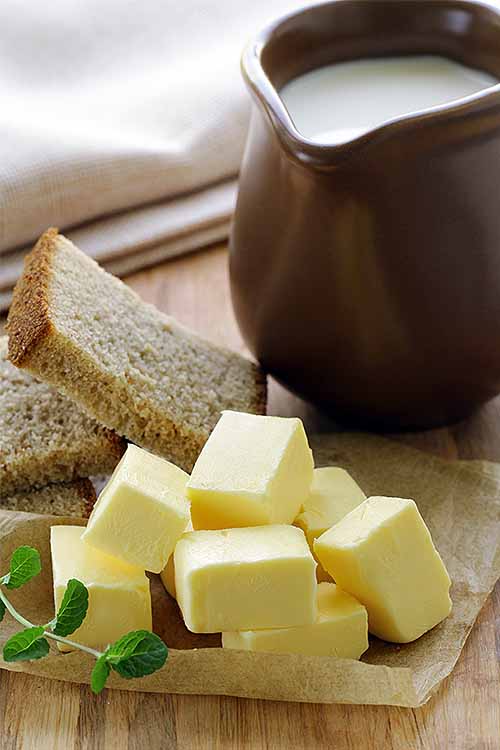
Sweet, creamy, and tangy, salted or not, it makes everything we eat better. But that’s not a new discovery.
Its origins can be traced back more than 10,000 years to a time when our ancestors began to domesticate cows, sheep, and goats and use them for milk.
The first batch was likely a happy accident. It’s believed that milk stored in animal skins was shaken and agitated by some long journey, causing a separation of milk solids and fat.
Some enlightened person realized perhaps that those waxy bits of fat were very tasty, and very useful. That genius started a movement, making butter a versatile and indispensable kitchen staple we’re truly smitten with.
Though butter took a bit of a hit when margarine became all the rage, causing its popularity to take a downward turn in a fat-shunning society, our love affair is back in full swing. Consumption has been inching slowly upward over the last decade.
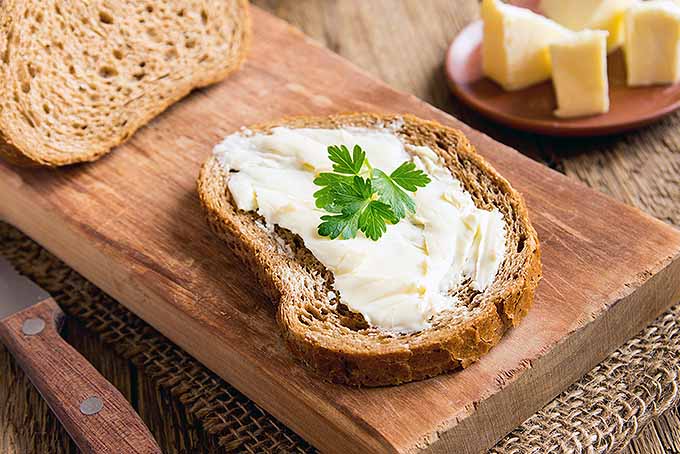
The latest data from 2014, compiled by the International Dairy Federation and Statistics Canada, showed Americans ate 2.5 kilograms (about 5.5 pounds) per person annually. Any guesses for which country eats the most?
No shock here – it’s France, with a whopping 8.3 kilograms per person a year (over 18 pounds!), followed by Germany (6.1 kilograms, or about 13.5 pounds) and Iceland (5.7 kilograms or 12.5 pounds).
Why Chefs Love It
To Jason Bangerter, a classically trained chef who heads up the kitchen at the Langdon Hall Country House Hotel & Spa just an hour from Toronto, butter is everything.
“I can’t imagine cooking without it,” he says. “I just couldn’t. It serves as a lubricant, flavor enhancer, and a means to transfer flavors. It has so many uses – sautéing, poaching, as a base and thickener for sauces, to finish vegetables, fish, and risotto, and for baking. Or you can just spread it on a piece of bread. What’s better than that?”
Bangerter is so enamored that he does what very few chefs have the luxury of doing: He makes his own, both to cook with and to send out to patrons in the hotel’s dining room.
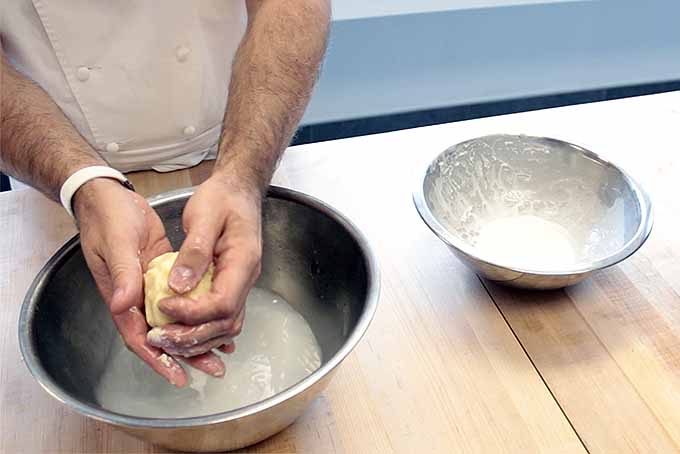
“It’s all about the quality of ingredients,” he explains. “You want them to be as wholesome and the best they can be. Good homemade butter is just another way to elevate a dish further.”
Defining “good” is tricky, because everyone has an individual preference for how they like it to taste. To Bangerter, “good” means a high fat content.
His cultured version has just three ingredients – “cream, yogurt, and love.” He whisks yogurt into the cream, and lets it sit for 24 hours to ferment a bit before whipping.
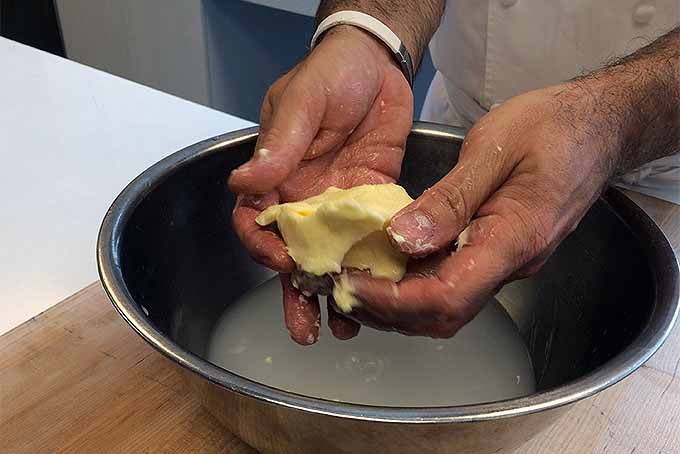
“I don’t think people should worry about butter,” he says. “You’re not really eating that much of it. Pay more attention to other types of less healthy fat. It is just cream. It’s a good thing.”
Curious about the chef’s favorite way to enjoy it? Bangerter snacks on radishes freshly plucked from the hotel’s on-site gardens, smeared with a dollop of the good stuff and topped with a dash of sea salt. If you haven’t tried it, this combination is delicious atop a toasted bagel, or slices of fresh bread.
How Butter Happens
It’s a biological, physical, and chemical miracle that turns cream into a beautiful, rich-tasting spread.
This process is so fascinating to pastry chef and food writer Elaine Khosrova that she spent more than three years researching it for her new book, Butter: A Rich History.
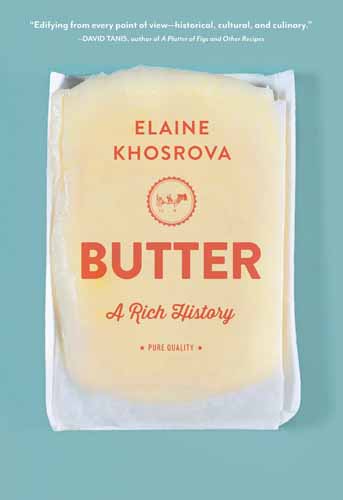
Butter: A Rich History, available on Amazon
Khosrova explains the fascinating history of its journey from farm to table and its cultural significance, plus the mechanics and artistry behind its production.
And though we primarily think of cows as the star supplier of whole milk – ground zero for butter production – it can also come from yaks, sheep, reindeer, goats, water buffalo, and camels, all members of a category of mammals called ruminants.
Regardless of the source, its origins are rooted in milk and its rich fatty byproduct, cream. Though whole milk can also be used, it’s a much more complicated, failure-prone process.
Once the cream is skimmed from the milk, it’s time to churn. This procedure is focused on coaxing every bit of fat from the cream, whether it’s done using a wooden bucket fitted with a plunger to thrust up and down through the milk, with a countertop kitchen mixer, or a large industrial-sized vat designed to whip.
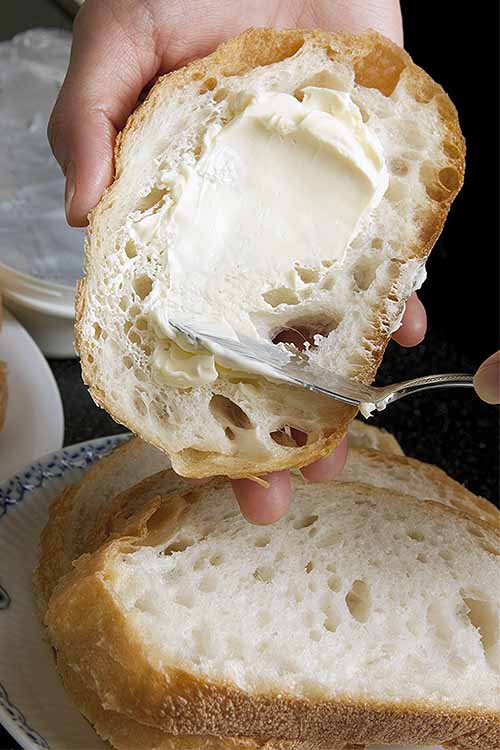
With vigorous agitation, the fat separates from the liquid and thickens. The remaining liquid (a.k.a. buttermilk) is drained off, leaving soft, waxy bits of butter – a pale golden yellow, courtesy of beta carotene contained in the cream.
Those solids are gathered by machine, wood paddles, or by hand, then shaped into lumps of butter. These are destined for the fridge, or to be stored on the kitchen counter in an airtight container – and to be enjoyed, of course.
A Matter of Taste
Khosrova’s slippery journey into the world of butter started with an assignment for a restaurant trade magazine. She was to sample two dozen varieties, including domestic brands as well as others sourced globally from New Zealand, Italy, Ireland, and France.
“I was so surprised by their unique differences, the nuances in their texture and taste,” Khosrova says. “I realized that I was totally taking this basic kitchen staple for granted. I knew that there was a much larger story there. It was a light bulb moment.”
Taste is dictated by three main factors, which Khosrova describes as follows:
- That animal’s diet (or “the land”).
- The type of animal producing the milk (or “the beast”).
- The skill of the maker (or “man”).
Land, beast, and man all contribute to the flavor of the end result.
Cows are the ruminants of choice for milk production. They’re easy to manage and plentiful, generous with their milk, and relatively inexpensive to raise.
Other animals, such as camels and water buffalo, are much less cooperative about being milked regularly, and have much lower yields as a result.
Holstein cows (those lovely black and white ones) are the most common and most prolific producers – the sticks you pick up at your local supermarket most likely come to you courtesy of a Holstein.
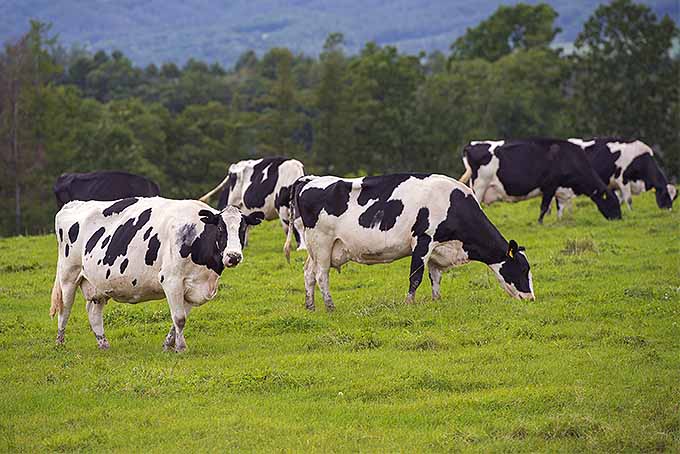
In fact, there are more than 9 million dairy cows in the US, and 90 percent of those are of Holstein descent, according to Holstein Association USA. Each one can produce as much as 9 gallons of milk per day.
And what a cow consumes plays an important role in the composition and taste of its milk. Khosrova writes about the vivid yellow variety that comes from Ireland and how it is linked to the fresh, tender young grass that grows in the fields there.
Meanwhile, cows in the region of Isigny, in Normandy, France, graze near marshes next to the sea. The grass is rich in iodine and other trace minerals, which creates a distinct flavor.
Cows who live in Alpine regions make their annual trek up to mountain meadows each spring so they can gorge themselves on sweet, fresh grass. Milk from animals who enjoy this type of lifestyle has more CLA (conjugated linoleic acid), a good type of health-boosting fat that aids metabolism and the immune system.
Variations on a Theme
Not all butters are created equal. Some are better for cooking, while others are more suited for slathering on toast, or melting and pouring over popcorn.

Here’s a primer on some common types:
Unsalted
It may also be called “sweet cream” butter and is made simply with cream and/or milk. This is the preferred variety called for in most recipes, and it works well for cooking and baking.
Salted
This one is great for putting on fresh bread, pancakes, or steamed vegetables. You can use this in place of unsalted butter in a pinch – just remember to add less salt than whatever your recipe calls for.
Be sure to check out our article on using unsalted vs salted butter in baking for more information.
Whipped
Air or a gas like nitrogen is added to make the regular stuff less dense, and to give it more volume. Dieters like it because one tablespoon has fewer calories (up to 50 percent less!).
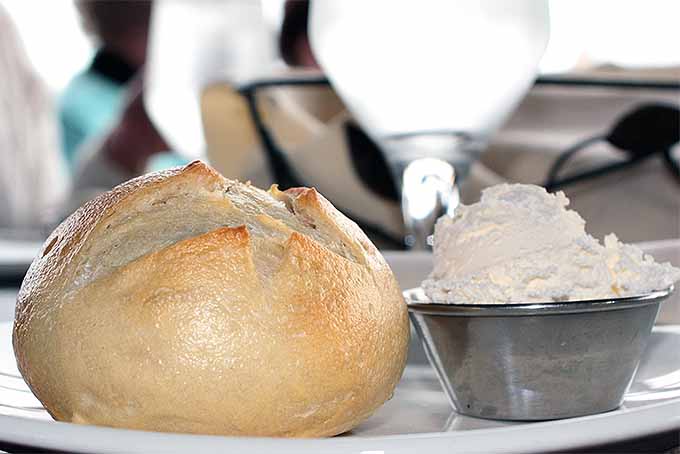
Its light texture and frothiness also allows it to be spread more easily. But this type is not recommended for baking or cooking.
European-Style (Cultured)
This type has a rich taste, made extra delicious because of its higher fat content – anywhere from 82 to 85 percent, compared to a minimum of 80 (by law) for commercially available versions found in the United States and Canada.
Because it contains less moisture and more fat, it produces super flaky and fluffy baked goods. The taste is slightly different, too – a bit tangy thanks to live bacteria similar to what’s found in yogurt, since the cream used is fermented before it’s churned.
Spreadable
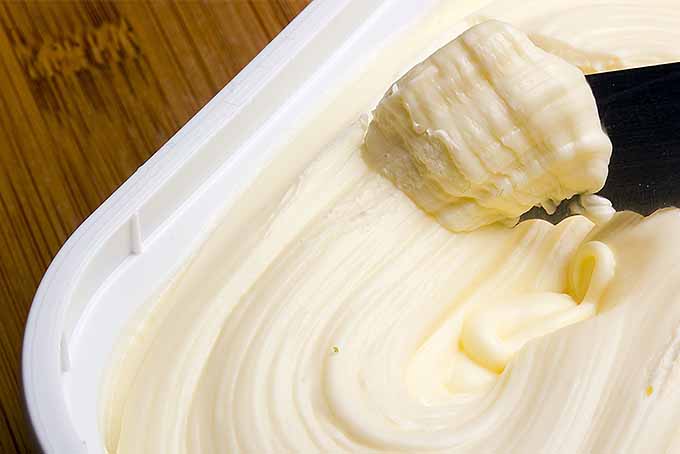
The softness of this type comes from mixing butter and vegetable oil. It’s okay for putting on your English muffin when the real stuff is still hard as a rock in the fridge, but avoid using it for cooking and baking – its formulation throws off flavor and texture.
Ghee
Common in Indian cuisine and that of other Eastern cultures, ghee is the result of a clarifying process, using heat to separate the three main components in butter – fat, water, and milk solids. Getting rid of those solids is the goal.

Once the milk solids are out of the equation, the remaining “butter oil” can be heated to a much higher temperature without burning, and it lasts much longer without going rancid – a property that’s especially handy in hot, tropical climates.
Browned
Sometimes referred to as “beurre noisette” or “hazelnut butter,” a nutty flavor develops when the milk solids are heated until they are dark and toasted.
It’s fabulous drizzled over cooked vegetables and fish like cod as a grand finale before serving in classic French style, or it makes an excellent sauce with a little fresh sage on pumpkin or butternut squash ravioli.
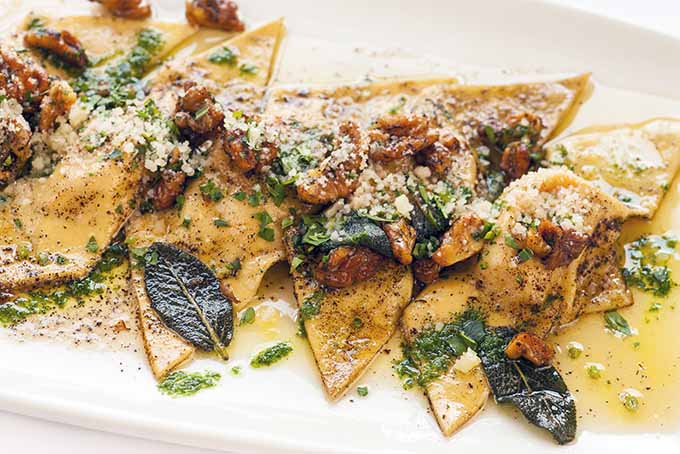
Smoked
Chef Bangerter likes to make a smoked variety. His kitchen equipment at Langdon Hall includes a large cast iron smoker that looks like a scaled-down locomotive.
He takes fresh butter wrapped in cheesecloth, puts it in a stainless steel tray, then sits it on top of another matching tray filled with ice cubes. While the butter sits on a rack farthest away from the flame, it stays cool while being infused with smoky, campfire-like flavor and aromas.
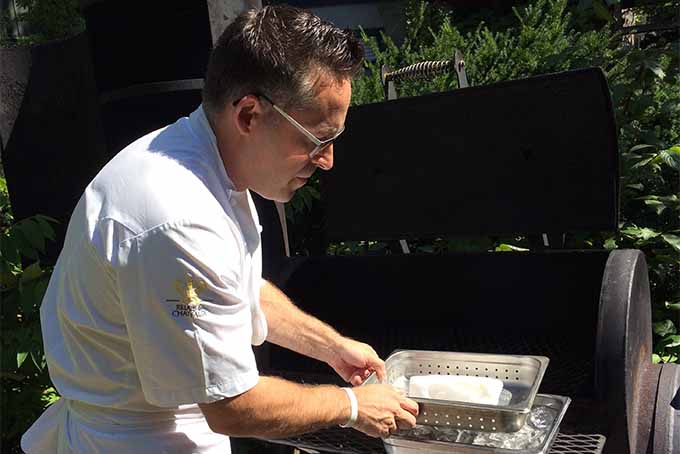
Home cooks can get a similar effect without a smoker by adding three or four drops of liquid smoke, and working them into a half pound of softened butter with a rubber spatula. Shape the mixture into a log, wrap it in cellophane, and refrigerate or freeze.
Flavored (A.K.A. Compound)
One of the many joys of butter is the ease with which it blends with other ingredients to create new and interesting flavor combinations. In other words, learn how to make a homemade compound butter!
It’s so simple:
Using a food processor or working it by hand with a rubber spatula, you can mix in a variety of tasty things – like chives, dill, parsley, garlic, sun-dried tomatoes, whole grain mustard, honey, lemon zest, or fresh berries – for delicious sweet or savory results.

Tips and Tricks
Freshness and Storage
Butter is at its best when fresh. Keep only what you’ll use within one or two weeks on hand, wrap the rest well, and store it in the freezer.
If you purchase your butter in something other than convenient sticks, try cutting the rest into half-cup portions, wrap each tightly in cellophane, then wrap in foil, and place in a zip-top a freezer bag.
Preserve Flavor
Keep the flavor true and unfettered in the refrigerator by storing it in an airtight container. Butter can easily pick up odors from other foods that can change its taste, so doing whatever you can to seal those out is important.
Quick Spread
Need to make it spreadable quickly? Cut your butter into chunks and place it in a freezer bag or between two sheets of wax paper. Whack with a rolling pin or meat tenderizer until it softens.
Slow Melt
Melt butter gently on low to medium heat in a heavy saucepan or on top of a double boiler, to avoid burning it or having the milk solids separate. Watch it carefully and pull it off the stove when the butter is about three-quarters melted.
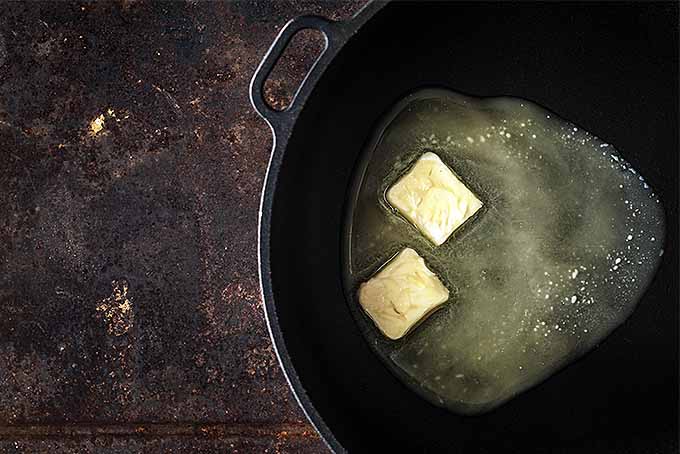
To melt in the microwave, cut butter into small pieces and place in a bowl covered with a paper towel or microwave cover. Heat on 30 percent power (medium-low) and stop every few seconds to check your progress, until just a few small bits remain. Stir until completely melted.
Dot on Top
If a recipe calls for dotting it over a pie or casserole, use a vegetable peeler to easily cut frozen butter into curls.
Boost Your Beverage
To give your morning coffee a rich kick, add a heaping tablespoon to two cups of hot java and blend well, either by using a frother or tossing it into a blender to mix.
That’s the key – otherwise, you’ll have an oil slick floating in your cup. Yuck.
But is it Healthy?
Poor butter. For the last couple of decades, it sat on the sidelines while growing numbers of people have embraced healthy eating.
Its saturated fat content had many in medical and nutrition circles condemning it, and advising that it should be avoided because of its connection to chronic conditions. Low-fat diets ruled.
Fortunately for fans of the creamy spread, the tide is turning. A growing body of evidence shows that low-fat diets aren’t all they were once cracked up to be. Jacqueline Howard reported on CNN.com that butter may in fact have a neutral effect on health.
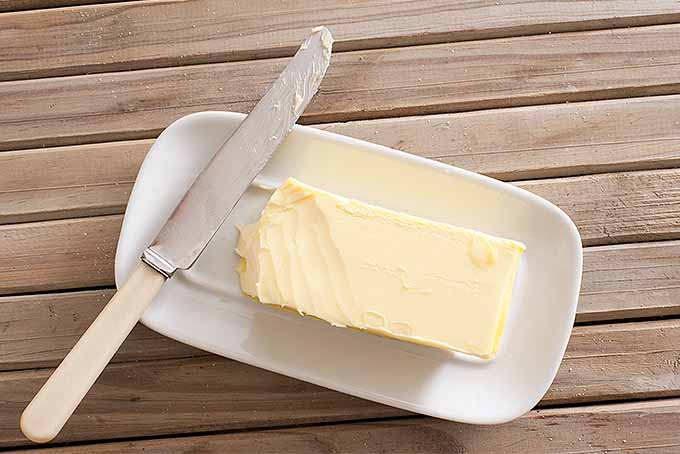
Howard referenced a study published in PLOS One this year, which reviewed nine scientific papers that included test results from more than 600,000 people. It concluded butter had no significant links to heart disease. Scientists aren’t saying it is healthy, just not the villain as once reported.
At a time when fears about it are softening, consumer views on the dangers of margarine are hardening. Some say they trust a cow more than they do chemists – a dig at margarine’s synthetic origins dating back to 1869, when it was first patented by French chemist Hippolyte Mége-Mouriés. He responded to a challenge from ruler Napoleon III to find a cheaper alternative to butter for his troops and the poorer classes.
This new invention wasn’t popular in France, so Mége-Mouriés sold the patent to the US Diary Company. They were the ones who colored margarine yellow, so that it looked like its more expensive cousin. Consumers ever since have been seduced by margarine’s lower price point and reported health benefits.
But findings of a study from Canada’s McMaster University published in the British Medical Journal last year asserted consumption of trans fats, such as those found in processed foods such as margarine, was associated with an increased risk of heart disease and death.
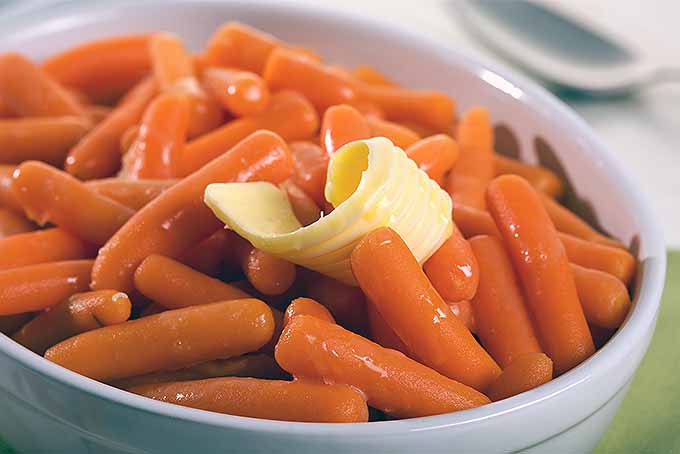
As the public mood has shifted more toward clean eating and whole foods – and away from processed, synthetic ones – it’s clear that this is butter’s time to shine.
But margarine still has its place. It’s still a great go-to option for vegans, and for those who are lactose intolerant. And many versions are available today that do not include the dreaded trans fats.
11 Wordly Facts Sure to Impress Your Friends
Elaine Khosrova’s book is a goldmine of fascinating knowledge. Here are a few factoids that got our attention:
1. In ancient times, Tibetans used butter sculptures (known as tormas) to predict the future. A holy man would drop one into boiling water to see if it floated (indicating positive days ahead), or simply melted (bad news).
2. Marie Antoinette had her own dairy built on the grounds of Versailles, so that she and her ladies-in-waiting could dress up and pretend to be milkmaids, milking cows and churning butter to amuse themselves.
3. Around the time of the American Revolution, the Philadelphia area was considered the US butter capital, overtaking Boston as the leading exporter.
4. The Cork Butter Museum in Ireland features a pail of butter that’s more than 1,000 years old – behind glass, thankfully!
5. In European regions including Ireland, Sweden, and Norway, it was once believed that a failed batch of butter was the result of a witch’s evil meddling. For protection, makers would bind twigs from mountain ash trees around their milk pails and churns.
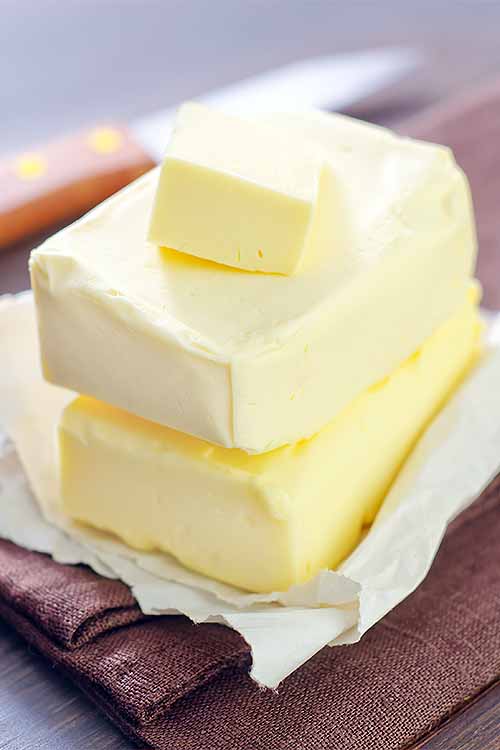
6. Byzantine physicians once prescribed unsalted, fresh butter as a treatment for tuberculosis.
7. Buddhist monks in monasteries located in Nepal and India create sculptures inspired by plants, animals, and stories about the Buddha out of yak butter, flour, and wax for use in religious rituals.
8. At the Iowa State Fairgrounds, 600 pounds of the golden fat is transformed into a life-size sculpture of a cow – an annual tradition.
9. Built in 1506, the Butter Tower in Rouen, France, was reportedly financed using the donations Catholics made to the church in exchange for permission to eat butter during Lent.
10. In the remote Omo Valley region of Ethiopia, it’s customary to spread butter and red clay from head to toe on the skin of brides-to-be.
11. If you visit Humla Province in the Himalayas, be prepared: locals welcome guests and say goodbye by smearing butter on their heads three times while reciting a blessing.
It’s Time to Enjoy
Go ahead – stock your kitchen with glorious, delicious butter. Buy one for everyday use for cooking and baking, for recipes like our flavorful vanilla butter cake, and a fancier kind (like an artisanal local variety or an imported one from Europe) for your table to spread on your favorite foods – in moderation, of course.
Experiment with it, and whip up a batch at home when the urge strikes! You’ll be amazed by how easy it is to make, and how delicious it is.
Do you have a favorite way to enjoy butter, or a tip to share with Foodal readers? Please send us your comments!
The staff at Foodal are not medical professionals and this article should not be construed as medical advice. Foodal and Ask the Experts, LLC assume no liability for the use or misuse of the material presented above. Always consult with a medical professional before changing your diet, or using supplements or manufactured or natural medications.
Photos by Michele Sponagle, © Ask the Experts, LLC. ALL RIGHTS RESERVED. See our TOS for more details. Additional photo provided by Brian Douglas. Uncredited photos: Shutterstock.
About Michele Sponagle
Based near Toronto, Ontario in the small town of Paris, Michele Sponagle specializes in lifestyle subjects, especially food, travel, and health. She has written three books and contributes to many top media outlets. Her adventurous slants on food and culture have taken her to 70 countries and still counting. She has fished for king crabs in the freezing waters off the coast of Norway, and foraged for chanterelle mushrooms in the forests of Oregon. Her proudest accomplishment to date is learning to like eggs.






Earlier this year, a family member gave me a butter making kit and I love it. Using that kit brought back memories of making batches with my grandmother in North Carolina and how she used to let us grandkids shake the mason jars. Making your own isn’t that hard and has a wonderful taste. I’ve never been a fan of margarine, and never believed the hype of its “health benefits.”
I fell for the margarine hype for a while. But I’m happy to be back with butter. I haven’t bought margarine for years!
Butter is something that never misses in my kitchen, it basically gives kind of a magic touch to anything you eat, especially bread. Toast some bread and spread a little on it, it’s just perfect. Thanks for sharing.
There is lots of great info and ideas here! I will be the first to say, we use butter for almost every meal we make. As long as its the real deal, it can really make a huge difference in the taste of the food, we have learned this the hard way, many times.
When I was a little kid I ate a whole pack myself, without any bread or anything, just raw. It was quite disgusting and that kept me away from using butter in the kitchen for a long time, but lately I’ve started using it again for fries and I can’t believe I didn’t do it before.
Really interesting article, I never knew it was so easy to make your own. The one thing about the article though, I disagree about the health comments. Butter is very much like red meat in cooking. There are times when you simply must use it to get the most out of your meals, but they should be used sparingly outside of when you really need it.
I love butter. I have all my life and I’m so glad to learn that it’s healthier than we thought. This article makes me feel like going out and finding all kinds to try on delicious hot bread. I also feel like trying to make a batch of my own. It would be so good!
Well where did it go? I know that these days you have to look a little harder not to get the vegetable oil spread or some other weird substitute, but I always manage to keep some on hand for the real deal. Sometimes margarine is okay, but you just cannot beat butter when you get right down to it. Makes me crave a croissant right about now.
It’s crazy to think the French are eating 3.5 times as much butter as Americans! Personally I can’t believe people still buy margarine and other substitutes, since the real thing is hardly prohibitively expensive. It’s my second-most often used fat, after olive oil.
I eat Irish grass-fed butter all the time and it’s outstandingly good for you and delicious. I have some nearly every day in eggs and rice and potatoes and all kinds of foods. It really is versatile and healthy.
Much of the misconception about butter and red meat being unhealthy is due to the fact people do not realize that what they’re eating, is CORN-FED like that which studies have shown to be harmful. Corn has a seriously bad ratio of fatty acids with way more omega-6 than omega-3. This is why butter and red meat has been incorrectly attributed to heart disease. Grass fed, real beef and butter are actually heart-healthy as the healthy omega-3 ratio means that this fat lubricates your arteries like olive oil, and helps them stay pliable and stretchy, whereas the fat in high omega-6 corn fed products sticks to arteries, binds to calcium, and causes blockages and plaques.
While too much of anything can be unhealthy, grass fed butter is not an unhealthy food. The French as noted above consume more than anyone and don’t get heart attacks like people in the U.S. It’s not just the red wine, but the fact it’s real grass fed butter. I think the only reason people are having heart disease from eating butter and red meat in the US is because they don’t demand it be grass-fed.
I love my butter, and use it everyday, on bread, in stir-frys or on my popcorn with a bit of garlic salt. Nothing could replace the smooth, creamy richness and I just love any recipes that call for it’s use because I find the flavors really great. I would really love to be able to make my own in the kitchen. That would just be awesome!
Love the fact that butter is a multi-purpose ingredient. I mainly use it for thickening sauces and I love to eat bread and butter with some sugar on top. I used to have bread and butter with sugar when I was 7. Also it was among my favorites. I love the fact that butter is not only making our foods better but also it’s making our lives better with better tasting food.
I once went to a Nepalese restaurant and enjoyed butter tea. I think it’s made with yak butter. It’s rich and creamy and a bit salty, not what one expects with tea. It took me a few sips to enjoy it, but most Westerners I know don’t really like it. I would love to know how to make this at home, because I really miss it!
When I lived in India, sometimes we would get butter as part of the prasad after Hindu services. The god Krishna was famous for his love of butter, and pictures of him sometimes show him stealing butter from pots. The story goes that Krishna loved stealing butter so much that the women of the village had to hang their butter in pots from the ceiling, but he got a stick, smashed the pots, and got the butter out that way.
I’m envious. I’d love to try butter tea sometime! It’s on my culinary bucket list.
Buttery toast is one of my favorite comfort foods, and I am glad it’s back. There was that period when people said it was bad, but it turns out it is better than artificial substitutes.
A friend who is a chef, always fries her eggs in butter, and they taste so much better than with oil, or maybe she was just better at cooking them. I feel as long as you don’t overdo it, butter is much healthier and makes things taste much better.
Frying anything in butter really elevates the flavor. My mom made eggs that way which were absolutely delicious! I agree with your chef friend!
I use a lot of butter when cooking, although when I ran out and had to use a block straight from the freezer instead of the fridge I did resort to a cheese grater to flake it once! If you are baking, margarine really isn’t a substitute.
I’m surprised it is only 2013 that concerns have been raised in the US. It may be a cultural thing as when I was at school in the 1980’s there were big posters on the wall warning about trans-fatty acids not being “natural”. (This was the “E is for Additives” era so there was a lot of concern about food content).
I always use butter, never margarine *shudder*. I like unsalted for spreading on toast or crumpets, and use salted in cooking. I couldn’t imagine using anything else – nothing gives that rich, creamy flavour like a stick of butter!
Like chocolate and coffee, nothing so good could be that bad. I always thought it was a myth to sell more oleo. Yuck.
The real thing makes a big difference in cooking, but it also makes a huge difference in baking. It not only improves the flavor but often changes the entire texture of baked goods.
You simply cannot use the fake version for popcorn, especially the kind you make fresh. It’s gross.
I’m glad it’s approved of more so now, but I’ve pretty much always had some in my kitchen.
Great article. Very interesting.
So glad you enjoyed the story…. It inspired me to make my own butter which is amazingly easy. You’re right on when you say nothing can replace butter – not only for its flavor, but for how its “mouth feel.” I’m a fan as you can tell! Thanks for posting.
Fortunately, I never did fall for the margarine hype, (That stuff was nasty tasting and unhealthy), and have been eating and enjoying butter for over 70 years now. I pretty much add butter to almost everything I eat. (I love the stuff.) And, nope, I’m not fat either. I’m 5’8″ tall and weigh in at 165 pounds. My number one beverage is milk, BTW. I love it too. I do have to watch my weight though. It’s the sweets that get me gaining weight not milk and butter.